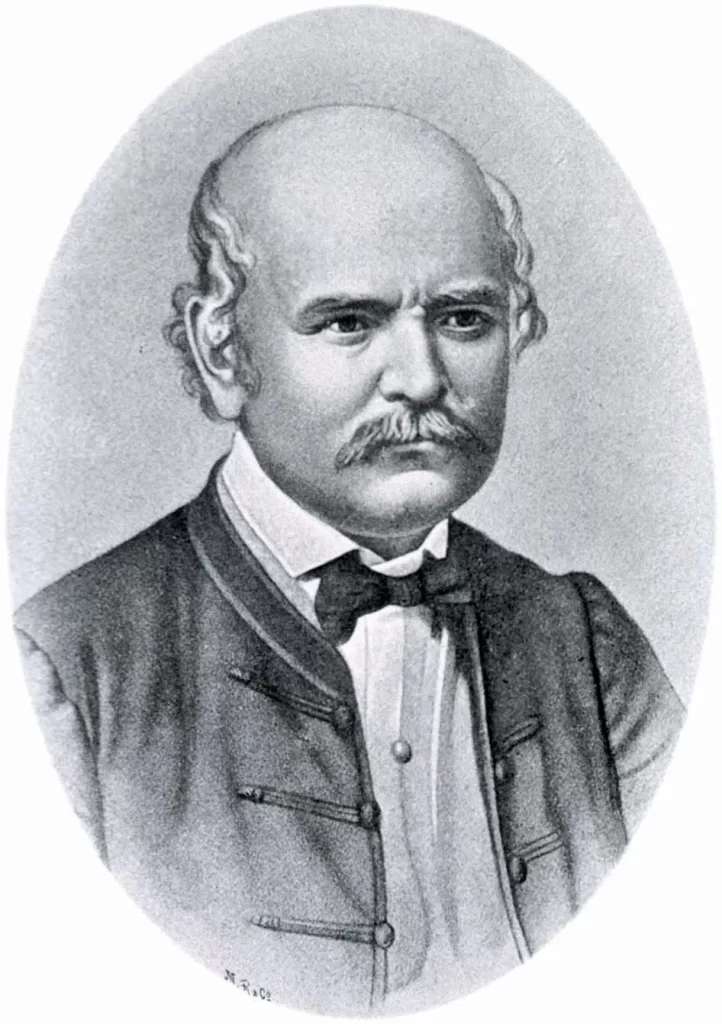

After the Covid-19 pandemic, you must now know the importance of washing your hands regularly to limit cases of infections. But did you know that the first doctor to discover that it is essential to wash your hands – especially in the medical field – actually did nothing but provoke the wrath of his colleagues, leading him to madness? Let me tell you his story.
Ignaz Philipp Semmelweis was born in 1818, in Buda (now Budapest). At his father’s suggestion, he started studying law but eventually decided to pursue a career in medicine. He became the assistant of Professor Johann Klein in the First Obstetrical Clinic of the Vienna General Hospital. The Viennese hospital housed two maternity clinics. Semmelweis discovered that puerperal fever caused an average maternal death rate of almost 10% at the First Clinic. The average rate in the Second Clinic was less than 4%. Desperate women begged to be admitted to the Second Clinic as a result of these numerous deaths. If their requests were denied, women gave birth on the street. Semmelweis was confused when comparing the death rate among women admitted to the Clinic to the rare incidences of puerperal fever among women giving birth on the streets.
It was when his friend Jakob Kolletschka died after being accidentally injured by a student’s scalpel during a post-mortem examination that Semmelweis established his theory. Upon autopsy, Kolletschka’s body showed the same pathology as women who passed away from puerperal fever. Semmelweis established a connection between cadaveric contamination and puerperal fever. According to him, medical students carried ‘cadaverous particles’ on their hands from the autopsy room to the obstetric examination. Given that the midwives in the Second Clinic did not have contact with corpses, this would account for the reduced death rate.
At that point, germ theory was not yet accepted in Vienna. Therefore, Semmelweis believed it was cadaverous material which would be at the origin of childbed fever. He recommended hand washing with a chlorinated lime solution in between performing autopsies and patient examinations. He had noticed that the chlorinated solution was more effective in eliminating the putrid odour of infected tissues during autopsies and assumed it would work similarly on contaminants from corpses. The mortality rate then decreased by 90% in the First Clinic and was nearly identical to the results seen in the Second Clinic. Thus, Semmelweis argued that having clean hands was crucial. At the time, this idea was ignored, rejected and even ridiculed.

Semmelweis expected that the chlorine washings would be widely adopted as accounts of the reduction in mortality rates, thanks to his supervision, were being circulated throughout Europe, which could lead to the saving of tens of thousands of lives, to no avail. Outraged by the medical community’s lack of concern, Semmelweis wrote open letters to European obstetricians, accusing them of being irresponsible murderers. He was sent in 1865 to a Viennese insane asylum against his will because his wife and other peers thought he was losing his mind. As he tried to escape, he was violently beaten by several guards and confined to a darkened cell wearing a straitjacket, among other treatments. After two weeks, he passed away at the age of 47 from a hand infection that might have been caused by the beating.
The rules of the Hungarian Association of Physicians and Natural Scientists stipulate that a commemorative address should be delivered in honour of a member who had died in the preceding year. There was no memorial speech given for Semmelweis. His death was not even mentioned.
János Diescher was appointed Semmelweis’s successor at the Pest University maternity clinic. In a short time, the death rates increased sixfold, reaching 6%, but there were no inquiries and no protests. No one seemed to have been willing to acknowledge Semmelweis’s life and work. It was only belatedly that his theory gained wide acceptance, when, more than two decades later, Louis Pasteur developed the germ theory of disease which completed Semmelweis’s observations.
This story is at the origin of the so-called “Semmelweis reflex” which is a tendency to reject new ideas or evidence that contradict the pre-existing beliefs. Nowadays, Semmelweis is considered a pioneer of antiseptic procedures.



Start your journey in the Extinguished Countries!
Get a free chapter from our first guidebook “Republic of Venice” and join our community!